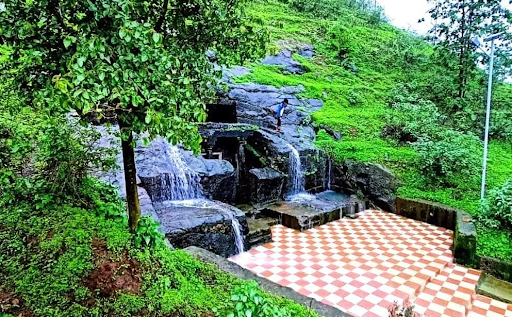Vashala Caves
Among the great cultural heritage that Maharashtra has, three types of architecture stand out prominently: caves, temples, and forts.
The history of cave excavation in Maharashtra dates back to the 2nd century to the 10th century. One of them is the Vashala Caves.
The people of Washala village and Panchkroshi call the cave Vasai. Behind the curtain of time, hundreds of such unknown caves are hidden in the Sahyadri range. This is one of them. This cave is very beautiful. This ancient cave is at the foot of the mountain adjacent to the village. According to information received from knowledgeable people, these caves are incomplete...but the beginning seems to have been done wonderfully. The method of making a two-story cave was used here, after looking at it, we realize that there is a structure of a ground floor and a first floor here. The work of which has also remained incomplete. This is a Jain cave. Inside, there are idols of two Jain Tirthankaras in Khadgasana, that is, images in a standing form. There are a total of twenty-four Tirthankaras in Jainism, and since the idols of two of them are similar, it is a little difficult to identify whose idol should be.
There are two steps at the beginning, beautifully carved, a square is made in the middle and a water tank is dug on the side. A small idol of Shiva is found carved in the rock next to it. It is not known why this idol was built here. A small viewing pavilion. Two beautiful pillars stand in the viewing area. The pillars are not intact. And there are two pipes carved in the stone for the water to go out. After that, there are some corals on the main door, but it is not clearly visible. Once you enter from there, there is a cave measuring 10 by 15. The sound is very loud. In front, two Jain idols are carved on the rock. And there are compartments in them, there must be a standing idol. (Standing idol means it can be moved from one place to another) Two or three sculptures are in a broken state. There is a Shivling, which must have been placed later. There is a place for lighting lamps in all four corners. Many signs of incomplete work are visible here. No one has any idea why the work was left incomplete.
Why might these caves have been created?
According to the locals, the area from Ankai, Takai, Igatpuri to Trimbakeshwar in Nashik region had a favorable environment for Jainism at that time. During that time, Jain caves and temples were found to be built in this area in large numbers. The Jain caves and temples of Tringalwadi and Trimbakeshwar provide evidence of this. These caves must have been carved during the same period. One general thing about the information about the caves is that in ancient times, Jain pilgrims used to travel to spread religion and their routines must have been strict. Such caves were carved to make it easier to follow those rules and to make it easier for the pilgrims traveling to spread religion to meditate. After the Satavahana period, the prosperity of foreign trade made these caves important.




